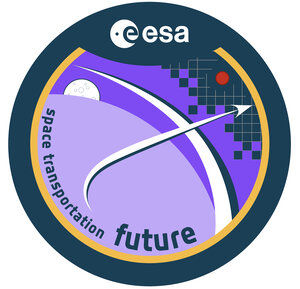Reconfigurable Digital Beamforming Network
| 794 - Abstract: |
| The present invention describes an architecture of a Reconfigurable Digital Beam Forming Network which offers substantial improvement in implementation cost (integration, power, number of components, genericity, etc.) while maintaining the highest degree of flexibility. ESA is looking for partners who would be interested in getting a license and implementing this patent. |
Description:
Advances in Digital Signal Processing (DSP) technologies and solutions greatly increase the capability and flexibility of today’s satcom products and assets. When combined with the state-of-the-art high bandwidth high speed mixed-signal-converters (Analog to Digital Converters – ADCs, and Digital to Analog Converters – DACs), these improvements have the potential to shift the processing loads, traditionally assigned to analog components, into the more flexible digital domain. One of these digital solutions is the digital implementation of beamforming network.
A beamforming network enables the generation of multiple simultaneous beams. This in turn enables frequency reuse, increasing the number of channels the data is transferred through. Beamforming can be undertaken in the analog as well as in the digital domains. It is also possible to adopt a hybrid approach to yield benefits from the advantages of both domains.
In view of the above, there is a need for fully digital beamforming at reduced complexity, which can also be applied to non-uniformly distributed input and/or output configurations, e.g., that can be applied to non-uniform antenna arrays and/or non-uniformly distributed beam directions. Futhermore, there is yet a need for beamforming techniques that are reconfigurable with respect to the input and/or output configurations, to accommodate for changes in the arrangement of antenna elements and/or changes of beam directions.
The present invention considers a fully digital beamforming approach using the Discrete Fourier Transform (DFT). The DFT, from its computational complexity view point, is not the most efficient transform, as it increases with the square of the number of samples to be processed. On the other hand, Fast Fourier Transform (FFT) has the power to reduce this complexity, which is due to the logarithmic increase in complexity as the number of samples increases.Considering the beamforming process, it is more likely that the antenna element positions and the beam locations will be non-uniformly distributed. Therefore, if an FFT like approach is to be incorporated in digital beamforming, the non-uniformity should also be introduced in the FFT definition. This invention deals with how non-uniform distributions within the antenna arrays and/or beam configurations can be supported using the DFT, and in extension, by the FFT, additionally addressing the reconfigurability of beamforming networks.
The generation of multiple beams, considering a general case of “planar arrays”, is demonstrated with this invention as well as a more generic and simplified model for the linear arrays.

In summary, the invention relates to:
- a Reconfigurable Digital Beam-Forming Network (R-DBFN),
- an On-Board Digital Processor (OBP) implementing it,
- a Multi-Beam array antenna comprising a digital beam-forming network.
This solution allows:
- full flexibility in beam steering each individual beam,
- full flexibility in planar array geometry (regular/non-regular element/sub-array positions),
- higher integration and reduction of power consumption with respect to existing solutions.
Innovations and advantages:
This invention presents the following advantages:
- Reconfigurable Beam-position
- Full flexibility in element position.
- Minimum theoretical complexity.
- Modularity.
- Compatibility with OBP channelizers.
- Cost savings are expected considering the following aspects:
- The described architecture shows a reduced number of operations which results in lower power consumption, area and circuits count.
- In comparison to similar complexity, the architecture offers an increased number of beams/elements (increased throughput).
The same architecture (and microelectronics) can be applied to different antenna configurations (including hybrid beamforming).
Domain of application:
Digital beamforming networks with full flexibility in beam steering and geometry of the antenna elements are key enablers of future telecom payloads and remote sensing instruments.
The present solution is relevant to all applications that need to generate a high number of beams:
- Telecom LEO/MEO/GEO multi-beam communication satellite
- Remote-Sensing, RF instruments and RADARs.
- Multi-Satellite Gateways (e.g. for mega-constellations)
- Wireless base-stations (e.g. xG)
IP Status
EP, US, CA and AU patent applications have been filed. The full patent application can be consulted under the following link: EP4304141A1.















 Germany
Germany
 Austria
Austria
 Belgium
Belgium
 Denmark
Denmark
 Spain
Spain
 Estonia
Estonia
 Finland
Finland
 France
France
 Greece
Greece
 Hungary
Hungary
 Ireland
Ireland
 Italy
Italy
 Luxembourg
Luxembourg
 Norway
Norway
 The Netherlands
The Netherlands
 Poland
Poland
 Portugal
Portugal
 Czechia
Czechia
 Romania
Romania
 United Kingdom
United Kingdom
 Slovenia
Slovenia
 Sweden
Sweden
 Switzerland
Switzerland

























